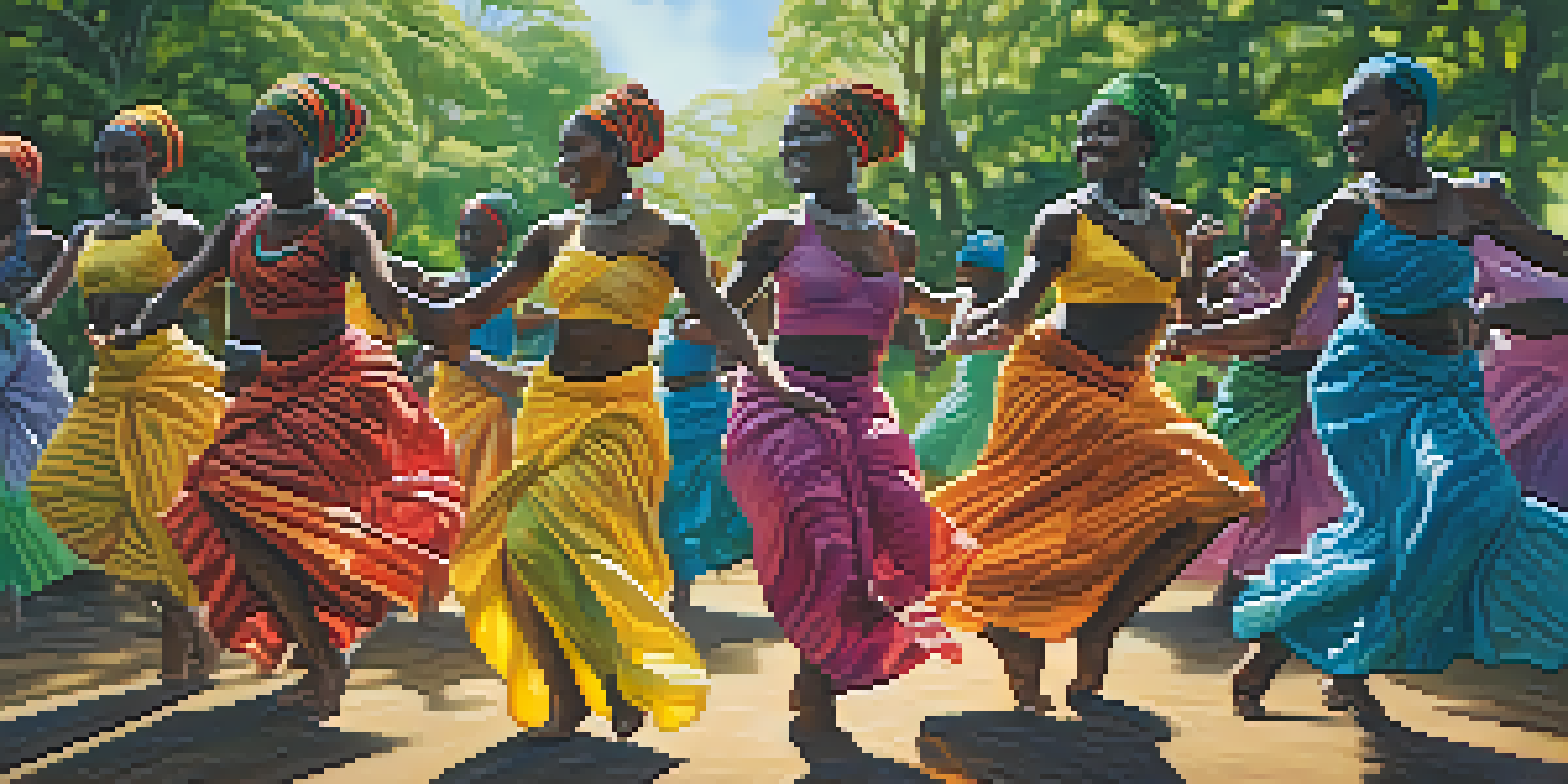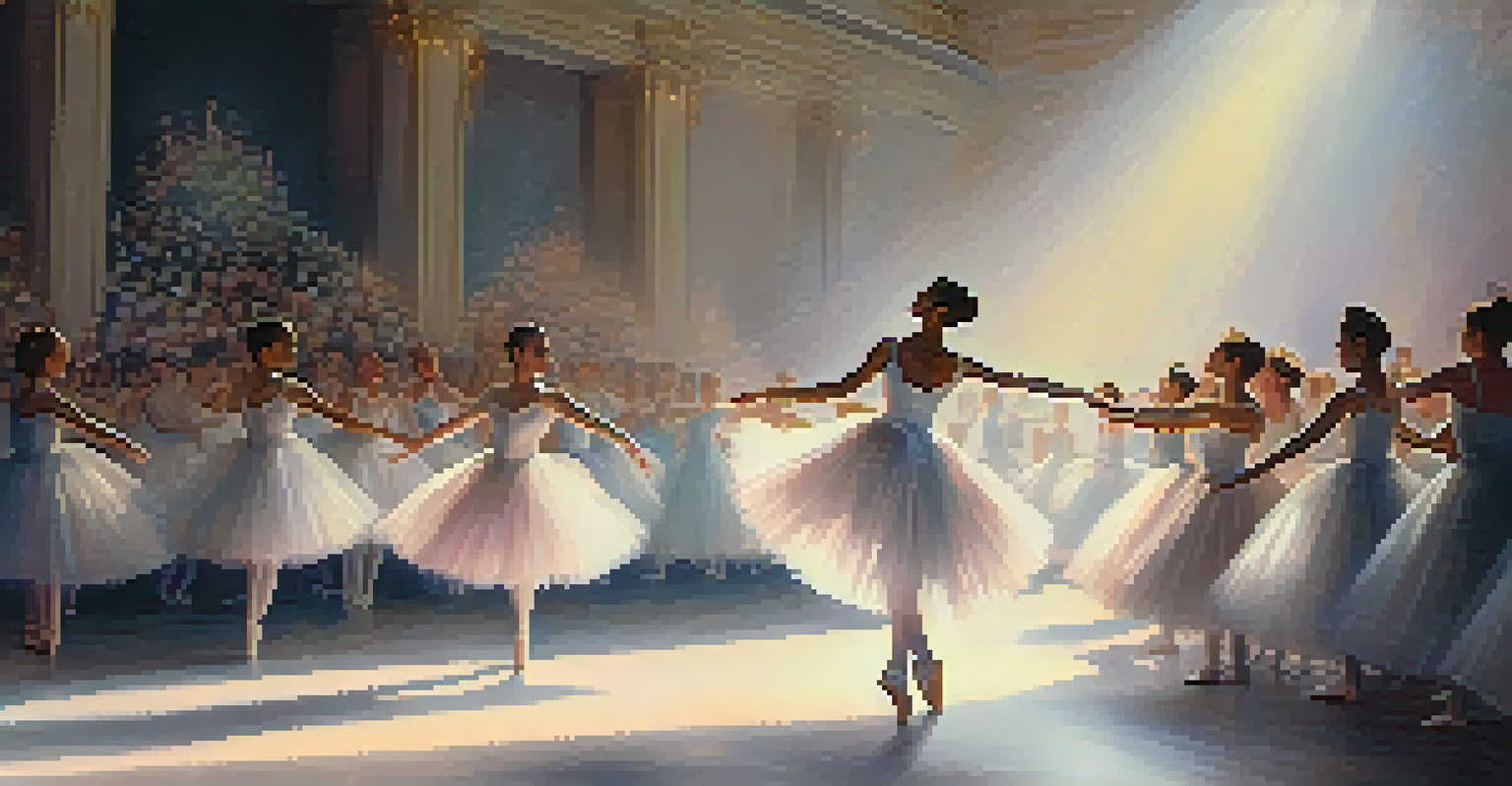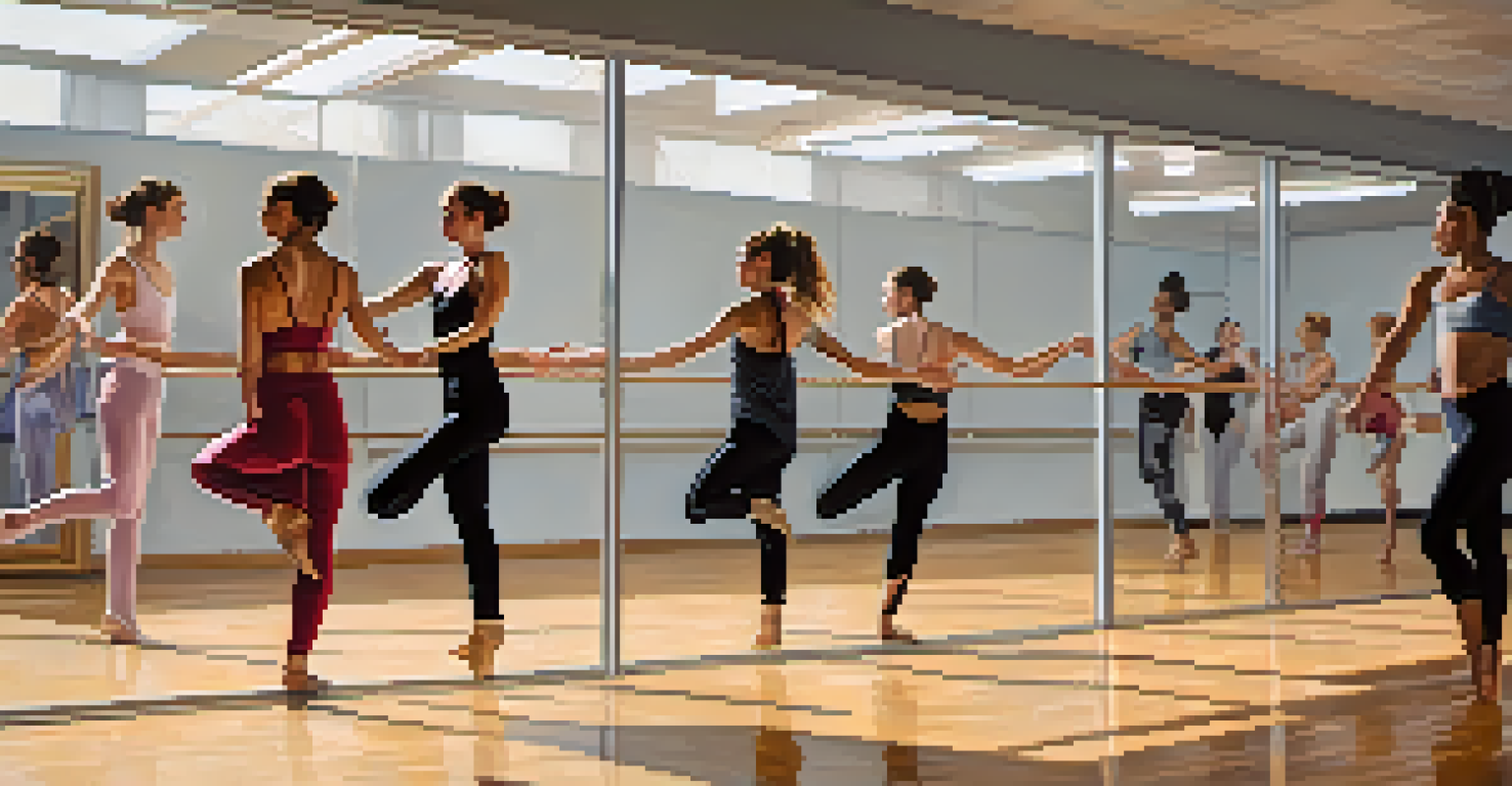Gender Expression Through Dance: A Historical Perspective

The Roots of Dance and Gender Expression
Dance has always been a form of expression, deeply intertwined with culture and identity. Historically, it has served as a medium for individuals to convey their gender identity and roles. From ancient rituals to modern performances, the way people move has often mirrored societal expectations of gender.
Dance is the hidden language of the soul.
In many cultures, dance was not only a celebration but also a statement of identity. For instance, in ancient Greece, dancers often portrayed gender roles through specific movements and costumes. This use of dance to express gender can be seen in various forms, from tribal ceremonies to classical ballet, each reflecting the norms of their time.
As we trace the evolution of dance, we see how it has been a canvas for both conformity and rebellion against traditional gender norms. By examining historical contexts, we can appreciate how dancers have challenged and reshaped societal perceptions of gender through their art.
Ritualistic Dance: Gender in Ancient Cultures
In ancient civilizations, dance played a crucial role in rituals and ceremonies, often reflecting societal attitudes toward gender. For example, in Indigenous cultures, men and women had distinct dance styles that were integral to their community's traditions. These dances were not mere performances; they were expressions of identity and status within the tribe.

Ritualistic dances often allowed for fluidity in gender expression, challenging binary roles. In some cultures, men might don women's attire during specific ceremonies to honor female deities, showcasing a deeper understanding of gender fluidity. Such practices highlight how ancient societies recognized and celebrated diverse expressions of gender.
Dance Reflects Gender Identity
Throughout history, dance has served as a powerful medium for individuals to express and challenge societal gender norms.
Through these rituals, dance became a powerful tool for expressing not just gender but also the interconnectedness of community identity. As we look back, it's clear that these early practices laid the groundwork for contemporary discussions about gender identity and expression in dance.
The Impact of Ballet on Gender Roles
Ballet, often seen as the epitome of classical dance, has long been associated with rigid gender roles. Traditionally, male dancers were seen as powerful and dominant, while female dancers were often cast as delicate and submissive. This dichotomy has influenced perceptions of gender in society, reinforcing certain stereotypes.
The body says what words cannot.
Despite its traditional roots, ballet has also been a space for subverting these roles. Notable male dancers have challenged the norms by embracing more fluid and expressive movements, while women have fought for stronger, more assertive roles on stage. This evolution allows for a richer interpretation of gender within the art form.
As ballet continues to evolve, it reflects broader societal changes regarding gender equality and representation. The rise of contemporary choreographers who challenge these norms has opened up new avenues for expression, allowing dancers of all genders to explore their identities more freely.
Modern Dance: Breaking Boundaries
The advent of modern dance in the 20th century marked a significant shift in how gender is expressed through movement. Pioneers like Martha Graham and Isadora Duncan broke away from the constraints of ballet, introducing styles that emphasized personal expression and emotional authenticity. This shift paved the way for more diverse representations of gender in dance.
Modern dance often embraces a wide range of body types and gender identities, encouraging dancers to express themselves beyond traditional norms. This inclusivity has led to the emergence of dance forms that celebrate fluidity and individualism, allowing performers to explore their gender identity authentically.
Rituals Showcase Gender Fluidity
Many ancient cultures utilized dance in rituals to allow for fluid expressions of gender, breaking away from strict binary roles.
As modern dance continues to evolve, it serves as a platform for addressing broader societal issues related to gender and identity. Through innovative choreography and performance, dancers challenge conventions and inspire conversations about gender norms and expressions, making it a vital part of contemporary culture.
Dance as a Political Statement
Throughout history, dance has often been used as a form of protest and political expression, particularly concerning gender issues. From the suffragette movement to LGBTQ+ rights, dance has played a pivotal role in advocating for change. Performers use their bodies to convey messages that resonate with societal struggles and aspirations.
For instance, the rise of queer dance forms in the late 20th century reflects a rebellion against mainstream gender norms. Styles like voguing and waacking not only celebrate individuality but also serve as powerful statements against oppression and marginalization. These dance forms empower dancers to express their identities and challenge societal expectations.
By using dance as a political tool, artists engage audiences and spark critical discussions about gender and identity. This intersection of art and activism exemplifies how dance can transcend mere performance, becoming a voice for the voiceless and a catalyst for social change.
Global Dance Forms and Gender Expression
Around the world, diverse dance forms provide unique insights into gender expression within different cultures. From Bollywood to African dance, each style reflects the values and beliefs of its society regarding gender roles. These traditions often challenge Western notions of binary gender, showcasing a spectrum of identities.
For example, in some African cultures, dance is a communal activity that allows for a fluid expression of gender, where roles can shift based on the context of the performance. This flexibility demonstrates a deep understanding of gender as a cultural construct rather than a strict binary.
Modern Dance Embraces Diversity
The evolution of modern dance promotes inclusivity and authenticity, enabling performers to explore a wider spectrum of gender identities.
By exploring global dance forms, we can appreciate how various cultures interpret gender differently. This exploration not only enriches our understanding of dance but also encourages a more inclusive view of gender identity, fostering a global dialogue about expression and representation.
The Future of Gender Expression in Dance
As society evolves, so does the expression of gender in dance. Today, there is a growing recognition of non-binary and gender-fluid identities, prompting choreographers and dancers to explore new narratives. This shift is evident in contemporary dance, where performers are increasingly challenging traditional gender roles.
The rise of social media has also played a significant role in this transformation. Platforms like TikTok and Instagram allow dancers to showcase their unique expressions and connect with a global audience. This democratization of dance fosters a community where diverse identities can thrive and be celebrated.

Looking ahead, the future of dance promises to be more inclusive and representative of the spectrum of gender identities. As artists continue to push boundaries, we can anticipate a richer tapestry of movement that not only reflects personal stories but also resonates with broader societal changes towards acceptance and understanding.